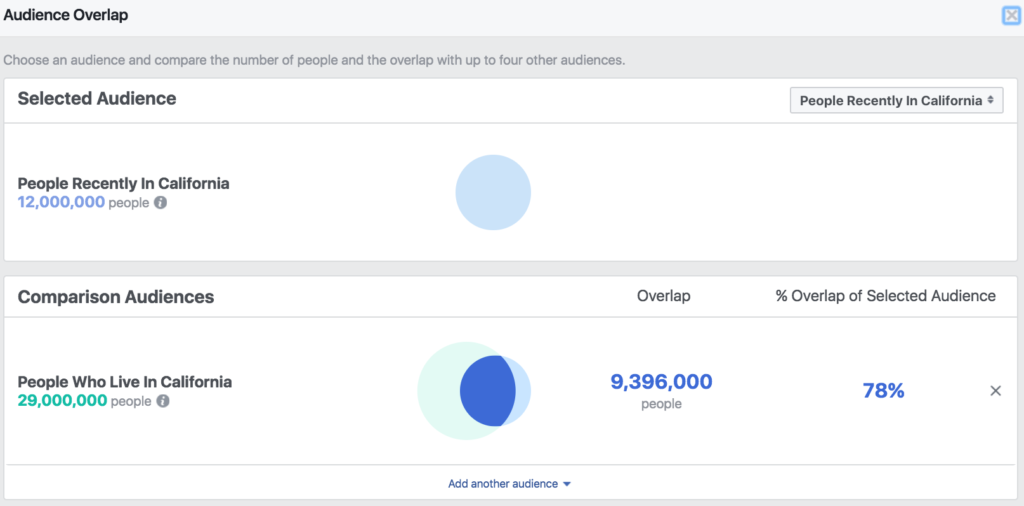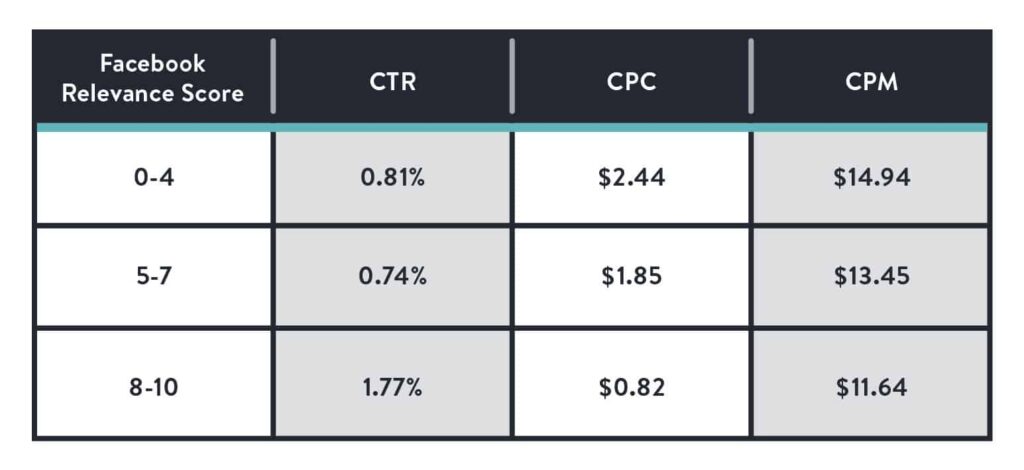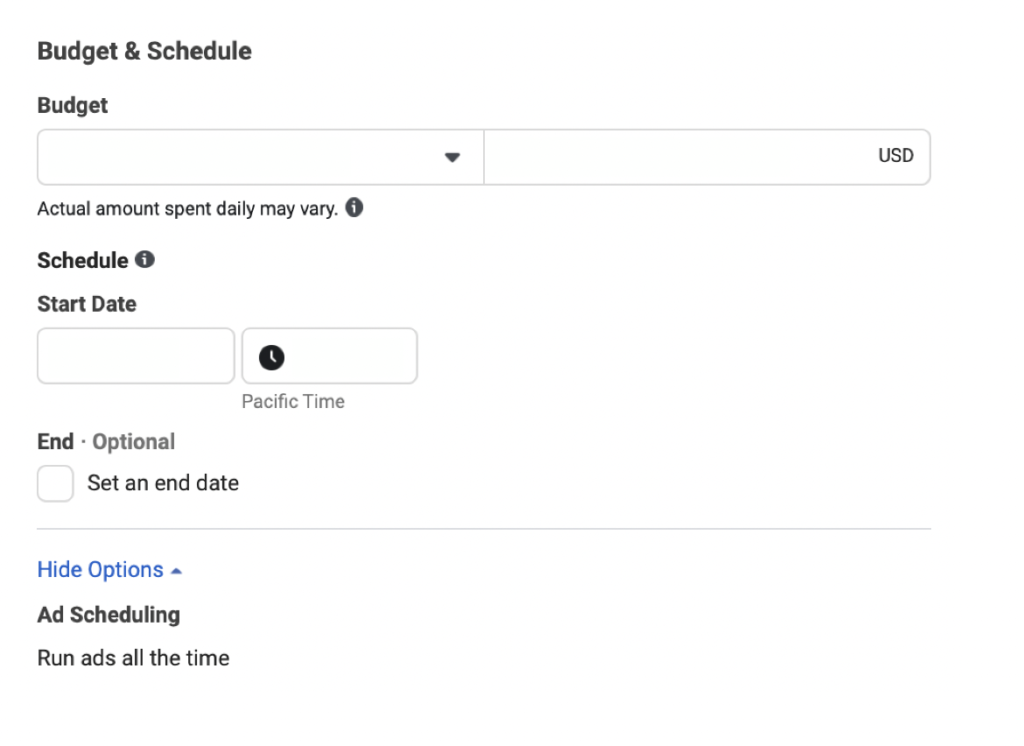Struggling to reduce your Facebook Ads CPM? Don’t panic just yet – we’ve got some tips to help you out. In this blog post, we will look at different factors and optimization settings that may impact your CPM. So if you’re curious to find out what these are, and how you can reduce your Facebook ads CPM, keep reading.
What is Facebook CPM?
For new advertisers out there, let’s quickly explain what this metric means. CPM stands for Cost per 1,000 Impressions, which is essentially the amount of money Facebook charges you to show your ads to a thousand people.
This metric is calculated as the total amount spent on an ad campaign, divided by impressions, and multiplied by 1,000. So if you had spent $50 and got 10,000 impressions, your CPM would have been $5.
The average Facebook ads CPM for all industries in prospecting campaigns is $8.36, while in retargeting is $11.45.
How to Reduce Facebook Ads CPM?
The Facebook CPM can be influenced by several factors. These include the specificity and relevance of the target audience, the quality and relevance of the ad content, the bidding strategy, the chosen ad format, seasonal trends, the placement of the ads, the relevance score provided by Facebook, and the overall campaign objectives.
Monitoring and optimizing these factors based on performance data is crucial for achieving better results and cost efficiency in Facebook advertising.
To reduce your Facebook ads CPM consider these tips:
- Broaden your Facebook ads audience
- Check your ad frequency
- Improve your relevance score
- A/B test ad creative formats
- Use advantage+ placements
- Choose the right campaign objective
- Use abo bidding
- Check your webiste and tracking
Broaden your Facebook Ads Audience
One thing to consider when you want to lower your CPM is to broaden your audience. Generally, with Facebook ads, you don’t want to have too broad of an audience or a too specific one. If you have a hyper-targeted audience, your campaign could get quite expensive, but on the other side, if your audience is too broad, you might get a less relevant audience for your product.
The idea with broad targeting is to let Facebook find your ideal customers and optimize further the campaigns. When using broad targeting you’ll target a much bigger audience and therefore your CPM will be much lower.
Also, if you’re running multiple ad sets or campaigns targeting similar audiences, there might be internal competition, driving up your CPM. Facebook’s “Audience Overlap” tool can help identify this issue.

Check Your Ad Frequency
Facebook’s ad frequency essentially tells you how often an ad is being served to each person. Keep in mind this isn’t an exact metric and that’s why Facebook displays an “average number” for your ad frequency.
Frequency = impressions/reach
A higher frequency is not only going to hurt your CTR and CPC but also your CPM. If the same people are constantly seeing the same ad, they’re not going to engage with it. And because of that, your CTR will start to decrease, while the CPC and CPM will increase.
When your audience sees your ad too many times, they might get tired of it. This is called “audience burnout.” When it happens, your ad has to work extra hard to find new people to show to. This pushes your CPM up because it’s a bit tougher for your ad to do its job.
Therefore, you need to constantly monitor your campaigns to understand how the frequency is impacting them.
Facebook doesn’t really specify the ideal ad frequency, but we do recommend keeping it below seven. Anything over that will usually start to negatively affect the performance of your ads.
Sometimes advertisers tend to focus more on their retargeting campaigns, serving ads to the same warm audience over and over. And that’s when your ad frequency starts to go up. So make sure you’re investing in your prospecting campaigns, so you can create better retargeting audiences in the future.
Improve Your Relevance Score
Another thing to keep in mind is to create ads that are relevant to your target audience, so you can have a high relevance score. Your relevance score can go all the way from 1 up to 10 based on how much Facebook thinks your audience is relevant and interested in your ads.
Basically, if your target audience engages with your ads, the relevance score of your Facebook ads increases. And a higher relevance score means higher CTR, and eventually, lower CPC and CPM.
The table below shows results for an ad account that ran over a $60k test on Facebook. As you can see, the relevance score impacts both the CTR, CPC, and CPM. Meaning, a higher relevance score significantly improves the CTR while reducing the CPC and CPM.

If your ad relevancy score hasn’t dramatically changed, the increase in your CPM could just mean there’s more competition for the same audience. So because more people are competing in the auction, in order for you to win that auction, you’ll have to increase your ad budget and spend a bit more than you anticipated.
A/B Test Ad Creative Formats
When it comes to choosing the creative format, a lot of advertisers tend to go for video ads.
But the question is, do video ads have a lower CPM than static images?
We decided to test a static image vs. video and analyze the results through four core metrics. All other variables remained the same, so we could understand the performance of these two creative formats.
With the test completed, we’ve seen that video ads not only had a higher CPM but also a higher CAC.

So if you’re still using video ads, think about testing the same creative with a static image. We guarantee you’ll reduce your Facebook Ads CPM.
Use Advantage+ Placements
Another way to help reduce your Facebook Ads CPM is to use advantage+ placements. Different ad placements will have different costs, so the more competition a certain placement has, the higher the CPM.
In our case, when we tested manual vs. advantage+ placements, the performance difference was huge.

After your ads run for a while, break down your placements and optimize based on the results. If you’re unfamiliar with Facebook ad placement options and best practices, read more about them in our advantage+ placement guide.
Choose The Right Campaign Objective
The goals of your ad campaign, which range from Awareness to Consideration to Conversion, may also impact your Facebook advertising costs.
Your objective essentially defines what people should do after they see your ad.
To choose the right ad objective, think about what your business goals are. Or better to say, what the goal of your campaign is. Is it sales on your website, downloads of your app, or subscribers to your blog?
So if your ultimate goal is to drive more sales, then the conversions objective would be the one to go with. On the other hand, if you want to encourage people to sign up for your newsletter, Lead generation would be the appropriate objective to use.
Budget and bidding
Budget and bidding strategies significantly influence the CPM on Facebook.
On the one hand, when you let Facebook handle your bidding automatically, it aims to get the most impressions for the lowest possible cost. This usually results in lower CPMs because Facebook optimizes to find cheaper opportunities for your ad.
However, it might not always target the highest-quality audience.
On the other hand, when you take control and set your bids, you specify how much you’re willing to pay for impressions.
This can lead to more predictable costs. If you set a higher bid, you might win more auctions but at a higher CPM. If you set a lower bid, you might miss out on opportunities, but your CPM could be lower.
If your budget is tight, Facebook may struggle to optimize for the best placements and times, potentially leading to higher CPMs because it can’t bid as aggressively in competitive auctions.

Tehnical considerations
The Facebook pixel is a piece of code that tracks user actions on your website. If it isn’t set up correctly or malfunctions, it can lead to inaccurate tracking of user behavior.
When pixel tracking is faulty, Facebook may struggle to optimize your ad delivery for the desired actions (like purchases or sign-ups). This can lead to less efficient spending and potentially higher CPMs as Facebook can’t accurately gauge the effectiveness of your ads.
One more important aspect here is a landing page. The landing page users are directed to after clicking on your ad should be relevant and of high quality. If users don’t find what they expect or have a poor experience, they are likely to leave quickly.
A high bounce rate and poor user interaction on your landing page can signal to Facebook that your ad isn’t providing a good experience. This can lead to higher CPMs as Facebook’s algorithm aims to promote ads that drive valuable and positive interactions.
But let’s not forget about seasonality
Facebook Ads work like an auction, where there are a number of advertisers competing against each other. As with any auction, the amount of competition will directly affect the ad price (CPM).
When the holiday season rolls around, the competition increases, and naturally, the CPM increases as well. So in order for you to remain competitive in auctions, you need to be prepared to raise your bid.
This is not the time for testing new things, so if you want your ads to be successful, make sure you’re using your best ad creatives and copy. Grow your audience throughout the year and let Facebook learn about what works for you – which creative, copy, or audience is converting well.
Debugging High CPM
When you find yourself grappling with unexpectedly high CPM on your Facebook Ads, it’s time to play detective. The first step is to break down your campaign settings, creative elements, and technical aspects to identify potential culprits.
In the upcoming sections, we’ll outline the steps you should take if you’re facing high CPM.
Facebook Pixel and event tracking
Maintaining a healthy Facebook Pixel and accurate event tracking is crucial. Here’s how to ensure they’re on point:
Pixel health: Use the Facebook Pixel Helper Chrome extension. It’s your sidekick in detecting Pixel issues and errors, ensuring it operates flawlessly.
Event integrity: Confirm that events, whether standard or customized, are triggering correctly. Avoid any potential duplications, especially with vital actions like “purchase,” which should trigger just once.
Cross-domain tracking: If your funnel involves multiple domains (e.g., third-party checkout systems), ensure tracking is set up correctly across domains.
Website performance
Elevating your website’s performance is also important. Here’s how to ensure a seamless user experience:
Page load speed: Leverage tools such as Google PageSpeed Insights or GTmetrix to gauge your page load speed. A sluggish website could lead users to bounce before pixels or events even have a chance to trigger.
Mobile optimization: Optimize your website for mobile browsing. Given that most Facebook users access the platform via mobile devices, a smooth mobile experience is crucial.
Server issues: Check for any potential server downtimes or errors. Disruptions affect tracking and user experience.
Ad content and presentation
One more important thing not to underestimate is ad content. Crafting compelling ad content is key. Here’s how to ensure your ads hit the mark:
Text check: Examine the length of your ad text. It should be concise enough to avoid being cut off or overwhelming users, particularly on mobile devices.
Sensitive keywords: Be mindful of keywords, especially those related to sensitive areas like health or finance. They can impact how your ad resonates with users and how Facebook’s algorithms perceive it.
Browser console: Peek behind the scenes. Open your landing page, inspect, and head to the “Console” tab. Look out for any script errors, including those related to Facebook tracking, that might hinder smooth performance.
Feedback and ad metrics
Also, you need to understand feedback and metrics to refine your strategy. Here’s how to interpret and optimize your data:
Keep an eye on negative feedback, like users hiding or deeming your ad irrelevant. This feedback can impact your ad’s relevance score, potentially affecting your CPM.
Regularly assess predicted performance metrics in Ads Manager. If quality or engagement rankings are low, it might contribute to a higher CPM.
Audience and targeting
Getting your audience and targeting right is crucial. Here’s how to fine-tune your approach:
As we mention before, make use of Facebook’s “Audience Overlap” tool. It helps you spot instances where different ad sets or campaigns might be going head-to-head, potentially affecting your CPM.
Double-check the accuracy of your retargeting audiences, such as website custom lists. Ensuring these lists populate correctly can significantly impact your CPM efficiency.
Ad Placement and delivery
Fine-tuning where and how your ads appear can make a significant impact. Here’s how to enhance your approach:
See if the high CPM is tied to a specific placement. Sometimes, underperforming placements can be paused to optimize performance.
Take a close look at your bidding strategy. Consider testing between automatic and manual bids to see if there’s a noticeable difference in CPM.
External interferences
Unforeseen external factors can influence your ad performance. Here’s how to manage potential interferences:
- Keep an eye out for users with browser settings or extensions that hinder ad delivery and tracking. These disruptions can distort your ad’s perceived performance and possibly impact CPM.
Historical performance
Analyzing past campaign performance targeting a similar audience can provide valuable insights. Here’s how to tap into historical data:
- Take a close look at previous campaigns that targeted the same or similar audience. Identifying patterns or changes can shed light on the factors contributing to the current high CPM challenge.
Summing Up
Now that you know what are some of our key tips to reduce your Facebook ads CPM, it’s time to start optimizing. Go through your Facebook Ad campaigns and make sure you’re not making any of the mistakes that we mentioned above.
If you have any questions or need help with your digital marketing you can reach us at [email protected] or check out our Lebesgue: AI CMO. The app comes with a 14-day free trial, giving you time to evaluate the results it brings.



